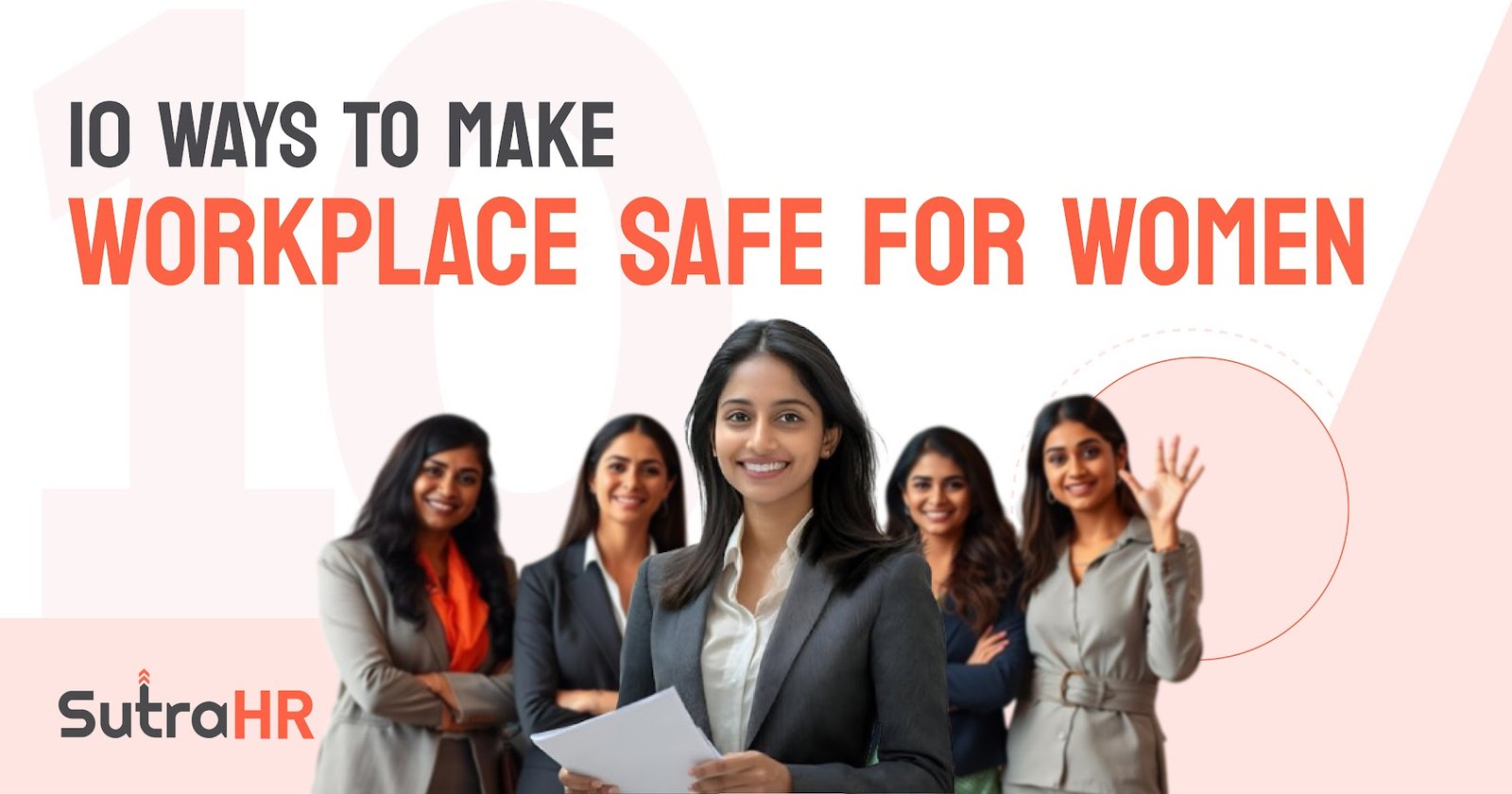Top Payroll Software Companies In India
In the dynamic world of modern business, effective payroll management is vital for all companies. Payroll software companies in India, including RazorpayX, Zoho Payroll, and sumHR, deliver modern tools to simplify payroll, ensure legal adherence, and boost employee contentment. These systems automate complex tasks such as wage computations, tax withholdings, and mandatory reports, thereby saving time and reducing errors. With functionalities such as cloud access, employee portals, and integrations, these firms enable businesses to focus on expansion while maintaining accuracy and adhering to Indian employment regulations. This piece reviews leading payroll software companies in India, underscoring their key attributes, advantages, and pricing to assist companies in selecting the optimal HR solution for their requirements in 2025.
Here are some of the best payroll software companies in India that are solving a major HR problem:
10+ Payroll software companies in India for 2025
Key People: Harshil Mathur, Shashank Kumar. Pricing: Rs. 5499 / Per Month, for 50 employees. RazorpayX payroll is one of the trusted payroll software companies in India for startups & businesses in India. RazorpayX Payroll is an HR software that is different from others, as RazorpayX Payroll automates salary transfers to any bank in India by taking care of the payments and filing all the compliances. Apart from this, RazorpayX Payroll is free with no limitations as you get the first 3 months of the Pro Plan as a trial with no hidden conditions. All these beneficial features of RazorpayX payroll have made it the most demanded HR & payroll software in India. Pricing starts at Rs. 1500+/month Features: 1. HR management Contact No: 1800 123 1272 Founded: Pricing: Rs. 5499 / Per Month, for 50 employees. Craze is quickly becoming a top choice among fast-growing teams with one of the Payroll software companies in India. Through its people operating system, HR, IT, and Finance workflows are automated. Craze’s quick onboarding process and response times in minutes make it a favorite among customers. Craze Features: Employee management
Automated, compliant payroll processing
Leave management system
Attendance and time tracking
Geolocation and geofencing rules
Equipment management
PF, PT, TDS reports and exports
Employee Self-Service (ESS)
Accounting software integration
Contractor management and payments
Craze Pricing: Prices for Craze vary depending on the app you choose. All apps can be used together or separately. Transparent pricing without restrictions: No minimum user commitment
There is no setup or implementation fee
There is no extra charge for fast support
No minimum lock-in period
No feature gating and restrictions
Full refund if you are unhappy
Key People: Waqar Azmi, Jay Thaker. sumHR is one of the SaaS cloud-based HR & payroll software companies in India. Their services are available across India. They also have international clients, although without payroll services. Their USP is the user-friendly interface and one-click payroll management feature. sumHR’s payroll feature includes several categories like monthly salary & CTC, income tax & deductions, provident fund & ESIC, profession tax & LWF, loan advances & bonus, MIS reports & assets, F&Fs. It directly calculates deductions based on attendance and leaves of the employees and company policies. sumHR is not only aimed at making the employer’s and HR’s life easy, but also targeted at employees. Along with making HR easy, they focus on increasing employee engagement with their ‘streams’ feature. Employees can easily access all their data and apply for requests directly from their dashboard. Since they’re cloud-based, it makes them extremely secure to trust with your data without worrying about leaking confidential documents. sumHR can be seamlessly integrated with existing biometric devices or new devices. sumHR also thinks of customer support highly. And so, they’re a team of approachable people who don’t give up till your queries or doubts aren’t solved. This Payroll software companies takes care of the entire employee life-cycle from onboarding to exit. Being the most affordable software with extensive features, they’re still open to feedback for new features. With sumHR 3.0, they’re introducing a brand new interface and a set of features that they know their current and future clients will love. Key People: Praveen Kumar, D.S. HRM Thread is one of the Payroll software companies that offers end-to-end solutions. Along with Mumbai, they also provide services in Delhi & NCR, Bengaluru, Hyderabad, Kolkata, Indore, Coimbatore, Vijaywada, Chennai, and Ahmedabad. Their payroll solution includes a list of different features such as processing salaries, making other payments such as reimbursements, providing statutory reports for ESIC, PT, PF, and TDS. This solution also solves income tax issues like calculating IT, TDS projections, returns, and calculations, to name a few. HRM Thread helps in calculating arrears for previous periods and also generates separate payslips for the same. Other payments like gratuity, bonuses, overtime calculations, and medical payments can also be done via HRM Thread. Key People: Prasad Rajappan. Key People: Haresh Awatramani. Key People: Girish Rowjee, Sayeed Anjum. GreytHR has offices in major cities in India like Bangalore, Chennai, Mumbai, Delhi NCR, Hyderabad, and Pune. They also have an office in Dubai. GreytHR’s core features include a payroll software. This module comes with a set of different features that help in processing payroll within minutes instead of days. Their biggest strength is the payroll module’s flexibility and power to handle different salary structures. It generates error-free salary slips for every employee that are also accessible via the mobile app. GreytHR handles statutory deductions with accordance to the law PF, ESI, Professional tax, TDS, etc. You can also generate reports like PF ECR file, ESI Returns, PT reports of all states and TDS returns with no extra effort. They automatically calculate and deduct TDS further reducing any additional work. Reports like Monthly Tax Statement, Form 16 & 12BA, eTDS Returns, Form 24Q, etc. are also available and ready to use. This payroll software has maximum effectiveness when handling requirements like salary advances, loans and automatic EMI deductions, arrears, reimbursements, bonus, FnF and so on. Key People: Vijay Yalamanchili, Sashi Pagadala. Keka HR is in the following locations: Hyderabad, Bengaluru, Delhi, Mumbai, Chennai, Vizag, and Pune. Keka HR’s payroll software can be used in SMEs as well as large corporations with 20k employees. Migrating to Keka HR is simple and can be done within a week. It is extremely customizable and can be configured to suit the company’s payroll needs. It’s also 100% in terms of statutory compliance. Payroll can be processed with a click and from one single screen, making it hassle-free. Loans and arrears, asset recovery, settlement statements, and other aspects of FnF are also handled by Keka HR. They provide real-time analytics of attendance and leave patterns of employees to optimize salary structures. Key People: Arun Kumar, Renu Yadav. Nitso Technologies has offices in Gurgaon, Delhi NCR, Karnataka, and Punjab. Nitso’s payroll software comes with a set of key features. You can select the periods for payments, like monthly or yearly. Salaries to be paid are calculated based on attendance. Employers can also put salaries on hold or freeze them for employees serving a notice period or who have been terminated. PF is applicable at the employee level. Reports can also be converted to MS Word, PDF, & Excel. Unlimited salary components can be added or deducted. Loans or advances given can automatically be adjusted while processing salaries along with interest calculation. ESIC, PF, PT, TDS can also be calculated without any hassles. Nitso also handles FnF settlements and reports. Modifications can be made at the time of calculating FnFs. Any extra payments apart from the monthly salary can be managed via Supplementary Payments. Key People: Kumar Siddhartha, Surabhi Kumar Siddhartha, Jitendra Mohandas Soman. Pocket HCM is available in major cities across India like Chennai, Bangalore, Mumbai, Delhi, Pune, and Hyderabad. Pocket HCM’s payroll software redefines payroll processing in any industry, from hospitality to retail. It provides leave and attendance tracking, loan tracking, and payroll processing seamlessly. Since it eliminates the need for any manual entries for salaries or deductions, it automates the entire process. It calculates any loans, taxes, incentives, etc, to save time and effort of the HR. Key People: Pankaj Bhargav. HR Mantra has offices in Mumbai, Delhi, and Bangalore. Their payroll feature is simple to use and covers different aspects of processing payroll. They bring down the process to a few steps rather than a week-long process. Employers can set salary slabs and policies department and team wise. You can also define IT exemption limits. It is 100% customizable and can handle even complicated pay calculations. Key People: Nigel Lobo. Quikchex’s payroll software makes payroll easy. Based on the organization’s policies, employers can set salary structures, allowances, and payroll cycles. Running payroll for the entire organization can be done in 5 simple steps. You have the option to put employees on hold and process payroll in batches. It is automatically synced with attendance and leaves, so any deductions are automatically calculated as per policies. Incentives, bonuses, reimbursements, loans, and advances can also be managed from the same software. Arrears for salary revisions and supplementary days are processed from a single platform. Automatically generated salary and tax payslips can be distributed to the employees once the payroll is processed. 
1. Razorpayx payroll
Founded: 2013.
Headquarters: Bangalore.
Key Clients: FreshToHome, Quikr, MedLife, GoalWise, BookMyForex
Additional employees are charged ₹120/employee/month.
2. Payroll Processing
3. Payroll Calculation
4. Leave & Attendance
5. Group Health Insurance
6. Bank Transfer
7. Payroll Compliance
8. Employee Insurance
9. TDS, PF, PT, and ESI
10. Help Desk
Address: 1st Floor, SJR Cyber, 22 Laskar Hosur Road, Adugodi, Bangalore, Karnataka 560030, IN
Platforms: Windows & IOS

2. Craze:
Headquarters: Bangalore.
Key Clients: FreshToHome, Quikr, MedLife, GoalWise, BookMyForex
Additional employees are charged ₹120/employee/month
It stands out for its modern UI, strong approval flows, real-time sync across apps, and affordable pricing. There is no limit to policies, document storage, salary structures, or any other process!

3. sumHR
Founded: 2013.
Headquarters: Mumbai.
Key Clients: StalkBuyLove, PayU, Cleartax, Curejoy.

4. HRM Thread
Founded: 2004.
Headquarters: Mumbai.
Key Clients: NIIT, Samsung, Baggit, Suvidhaa.

5. ZingHR
Founded: 2014.
Headquarters: Mumbai.
Key Clients: Enrich Salons, SMERA Ratings Ltd, Zuari Investments, Unimark Remedies.
ZingHR has offices in Mumbai, Gurgaon, and Bangalore. With 24+ modules, ZingHR has approximately 450 clients. They’ve adopted a mobile-first approach and are employee-centric. They have 4 products – Welcome Pack, Power Pack, Business Pack, and Turbo Pack. All 4 packs come with Payroll Compliance Management (PCM). ZingHR claims to help companies process complex payroll and compliance in 4-5 days. They have a flexible payout configurator feature. Say, if your company policies allow overtime payments, then based on the extra hours put in by the employee, the software will automatically calculate and pay for it. Salary revisions and history can also be tracked. Employees can plan their taxes by declaring their investments online and have it tracked for proof by your team.

6. Beehive HRMS
Founded: 2012.
Headquarters: Mumbai.
Key Clients: Reznext, Faber Castell, Faaso’s, Datamatics, Zodiac.
Beehive provides services across India. Their payroll management software comes with multiple features. They automate the entire payroll process and reduce the time required. To make things simpler, Beehive’s payroll management feature is integrated with leave, attendance, loans and advances, and reimbursements. They categorize employees by pay grade and also generate paychecks. Arrears and loans are also managed by Beehive’s payroll software. Their IT calculator and tax projection/deduction feature make taxes simple.

7. GreytHR
Founded: 1994.
Headquarters: Bangalore.
Key Clients: Dell, Volvo, Jockey, Greenpeace, Freshdesk.

8. Keka HR
Founded: 2014.
Headquarters: Hyderabad.
Key Clients: Walkover Web Solutions, Honda, Saavn, Godrej, Engineer Babu.

9. Nitso Technologies
Founded: 2009.
Headquarters: Gurgaon.
Key Clients: Exide, Amity University, Global Autotech, Control Risks.

10. Pocket HCM
Founded: 2014
Headquarters: Mumbai.
Key Clients: Invicta eSolutions, Goel Steel Company, Morpheus Human Consulting.

11. HR Mantra
Founded: 1996.
Headquarters: Mumbai.
Key Clients: LIC Housing Finance, Piramal Healthcare Mumbai, Parason Machinery.

12. Quikchex
Founded: 2013.
Headquarters: Mumbai.
Key Clients: Mapbox, Coupon Dunia, Haptik, Coverfox, B2X.
Conclusion
Choosing the correct payroll software companies in India is crucial for smooth HR processes. Solutions like RazorpayX, Zoho Payroll, and sumHR offer automation, regulatory adherence, and easy-to-use designs, accommodating various company requirements. By minimizing manual mistakes and guaranteeing prompt salary disbursements, these providers boost productivity and employee confidence. Businesses can utilize these resources to simplify tasks, remain compliant, and stimulate expansion in 2025.











 Digital Piloto Pvt. Ltd. is a Google Partner
Digital Piloto Pvt. Ltd. is a Google Partner 































